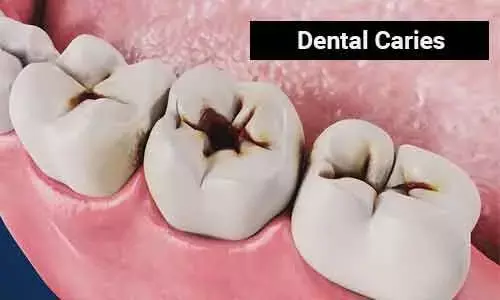- Home
- Medical news & Guidelines
- Anesthesiology
- Cardiology and CTVS
- Critical Care
- Dentistry
- Dermatology
- Diabetes and Endocrinology
- ENT
- Gastroenterology
- Medicine
- Nephrology
- Neurology
- Obstretics-Gynaecology
- Oncology
- Ophthalmology
- Orthopaedics
- Pediatrics-Neonatology
- Psychiatry
- Pulmonology
- Radiology
- Surgery
- Urology
- Laboratory Medicine
- Diet
- Nursing
- Paramedical
- Physiotherapy
- Health news
- Fact Check
- Bone Health Fact Check
- Brain Health Fact Check
- Cancer Related Fact Check
- Child Care Fact Check
- Dental and oral health fact check
- Diabetes and metabolic health fact check
- Diet and Nutrition Fact Check
- Eye and ENT Care Fact Check
- Fitness fact check
- Gut health fact check
- Heart health fact check
- Kidney health fact check
- Medical education fact check
- Men's health fact check
- Respiratory fact check
- Skin and hair care fact check
- Vaccine and Immunization fact check
- Women's health fact check
- AYUSH
- State News
- Andaman and Nicobar Islands
- Andhra Pradesh
- Arunachal Pradesh
- Assam
- Bihar
- Chandigarh
- Chattisgarh
- Dadra and Nagar Haveli
- Daman and Diu
- Delhi
- Goa
- Gujarat
- Haryana
- Himachal Pradesh
- Jammu & Kashmir
- Jharkhand
- Karnataka
- Kerala
- Ladakh
- Lakshadweep
- Madhya Pradesh
- Maharashtra
- Manipur
- Meghalaya
- Mizoram
- Nagaland
- Odisha
- Puducherry
- Punjab
- Rajasthan
- Sikkim
- Tamil Nadu
- Telangana
- Tripura
- Uttar Pradesh
- Uttrakhand
- West Bengal
- Medical Education
- Industry
Fluoridation does not increase risk of bone cancer, finds study

AMERICA-Public health policy decisions in the United States have resulted in 62.4% of the population having access to fluoridated water.Fluoridation one of the most important public health policies of the twentieth century to reduce tooth decay has been linked with this bone cancer.
The Journal of Dental Research published today the results of a study that demonstrated that community water fluoridation is not associated with increased risk of osteosarcoma.
Osteosarcoma is a type of bone cancer that begins in the cells that form bones. Osteosarcoma is most often found in the long bones of legs and arms but it can start in any bone.
More than sixty percent of the U.S. population have access to community water fluoridation, considered to be one of the most important public health policies of the twentieth century due to its reduction of tooth decay at the population level. Fluoride ingestion has been suggested as a possible risk factor for osteosarcoma based on a 1990 animal study. Six of the seven subsequent case-control studies in humans reported that fluoride in drinking water was not associated with osteosarcoma.
This study assessed whether living in a fluoridated community was a risk factor for osteosarcoma by performing a secondary data analysis using data collected from two separate, but linked studies. Patients for both Phase 1 and Phase 2 were selected from U.S. hospitals using a hospital-based matched case-control study design. For both phases, cases were patients diagnosed with osteosarcoma and controls were patients diagnosed with other bone tumors or non-neoplastic conditions.
In Phase 1, cases (N=209) and controls (N=440) were patients of record in the participating orthopedic departments from 1989-1993. In Phase 2, cases (N=108) and controls (N=296) were incident patients who were identified and treated by orthopedic physicians from 1994-2000. This analysis included all patients who met eligibility criteria on whom we had complete data on covariates, exposures, and outcome. Conditional logistic regression was used to estimate odds ratios (OR) and 95% confidence intervals (CI) for the association of community water fluoridation with osteosarcoma.
The adjusted OR, for osteosarcoma and ever-having lived in a fluoridated area for non-bottled water drinkers was 0.51(0.31 - 0.84), p=0.008. The same comparison adjusted OR for bottled water drinkers was 1.86 (0.54 - 6.41), p=0.326.
"These results indicate that residence in a fluoridated community is not related to an increase in risk for osteosarcoma after adjusting for race, ethnicity, income, distance from the hospital, urban/rural living status, and drinking bottled water. This should not be surprising given that ingestion of fluoridated water is a common exposure and osteosarcoma remains a rare disease," said Chester Douglass; Harvard School of Dental Medicine, Department of Oral Health Policy and Epidemiology.
for further references log on to:
https://journals.sagepub.com/doi/full/10.1177/0022034520919385
Dr Kamal Kant Kohli-MBBS, DTCD- a chest specialist with more than 30 years of practice and a flair for writing clinical articles, Dr Kamal Kant Kohli joined Medical Dialogues as a Chief Editor of Medical News. Besides writing articles, as an editor, he proofreads and verifies all the medical content published on Medical Dialogues including those coming from journals, studies,medical conferences,guidelines etc. Email: drkohli@medicaldialogues.in. Contact no. 011-43720751


